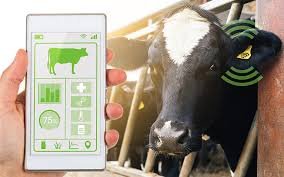The dairy farming industry is experiencing a technological transformation. cow monitoring systems are changing how farmers manage their herds, moving from traditional observation methods to data-driven decision-making. These innovative solutions combine wearable sensors, cloud computing, and artificial intelligence to provide farmers with real-time insights into their cattle’s health, fertility, and productivity.
The Technology Behind Smart Monitoring
Modern livestock monitoring rely on three core components working seamlessly together. First, wearable sensors—whether attached to the cow’s neck, leg, or ear—continuously collect behavioral data. These sensors track essential metrics including activity levels, rumination patterns, eating time, and movement behavior around the clock.
Second, wireless gateways collect this data from multiple sensors simultaneously. Advanced systems can monitor up to 500 animals from a single gateway, with some utilizing solar-powered routers that can be installed anywhere from barns to pastures. The collected information is then transmitted to cloud servers where sophisticated AI and machine learning algorithms process and analyze the patterns.
Finally, user-friendly mobile and web applications present this complex data in an accessible format. Farmers receive actionable alerts and insights directly on their smartphones or computers, enabling them to make informed decisions regardless of their location.
Heat Detection: Never Miss the Window
One of the most significant benefits of smart monitoring is accurate heat detection. Traditional methods of identifying cows in estrus are time-consuming and prone to human error, often resulting in missed breeding opportunities. Automated systems provide precise heat detection alerts, identifying not just which cows are in heat, but also the optimal time for insemination.
This accuracy translates directly to improved pregnancy rates and reduced costs. Farmers save money on mistimed artificial inseminations and can breed their herds more efficiently. For grazing operations where cattle are spread across large areas, this 24/7 wireless detection is particularly valuable.
Early Health Problem Detection
Perhaps the most critical advantage of continuous monitoring is early disease detection. Sensors track rumination and eating patterns, which serve as reliable indicators of individual cow health. When an animal deviates from its established behavioral patterns, the system generates health alerts detailing the changes and possible causes.
These early warnings allow farmers to intervene before conditions worsen, reducing treatment costs and preventing production losses. Some advanced systems integrate milk quality sensors with behavioral monitoring to detect issues like ketosis in their earliest stages. Group-level digestion alerts also help identify environmental or nutritional problems affecting multiple animals.
Beyond Individual Monitoring
Modern cattle monitoring extends beyond individual animal tracking. Systems analyze group behaviors to assess herd comfort and welfare. Factors like overcrowding, poor bedding quality, or excessive activity that might disturb the animals’ rest can be identified and addressed promptly.
Integration with existing herd management software creates a comprehensive ecosystem. Real-time data can trigger automated sorting gates, streamline veterinary consultations, and provide nutritionists with detailed feeding behavior information. This connectivity enables collaborative herd management where farmers, veterinarians, and specialists can access relevant data remotely.
Practical Benefits for Farmers
The advantages of smart cattle monitoring translate into tangible improvements in farm operations. Farmers report significant time savings, as they can focus their attention on animals that actually need intervention rather than checking the entire herd. The ability to access information anywhere, anytime provides flexibility and peace of mind.
Production improvements come from multiple angles: higher pregnancy rates from accurate heat detection, reduced disease-related losses, optimized feeding programs, and better overall herd health. Even small improvements in these areas compound into substantial financial benefits, particularly for larger operations.
Looking Forward
As dairy farming continues to evolve, smart monitoring systems are becoming essential tools rather than luxury additions. The technology is mature, proven, and increasingly accessible to farms of all sizes. Whether managing 20 cows or 20,000, farmers can leverage these systems to work smarter, not harder.
The future of dairy farming lies in this combination of agricultural expertise and technological innovation. By providing accurate, actionable information, smart cattle monitoring systems empower farmers to optimize their operations while improving animal welfare. In an industry where margins are tight and efficiency is paramount, these tools represent a significant competitive advantage and a pathway to sustainable, profitable farming.
- How Adaptive Difficulty Is Changing the Online Slot Game Experience - December 2, 2025
- Understanding How Online Slot Games Work - November 29, 2025
- How the Qatari Government Could Support Online Casino Gaming - November 25, 2025




